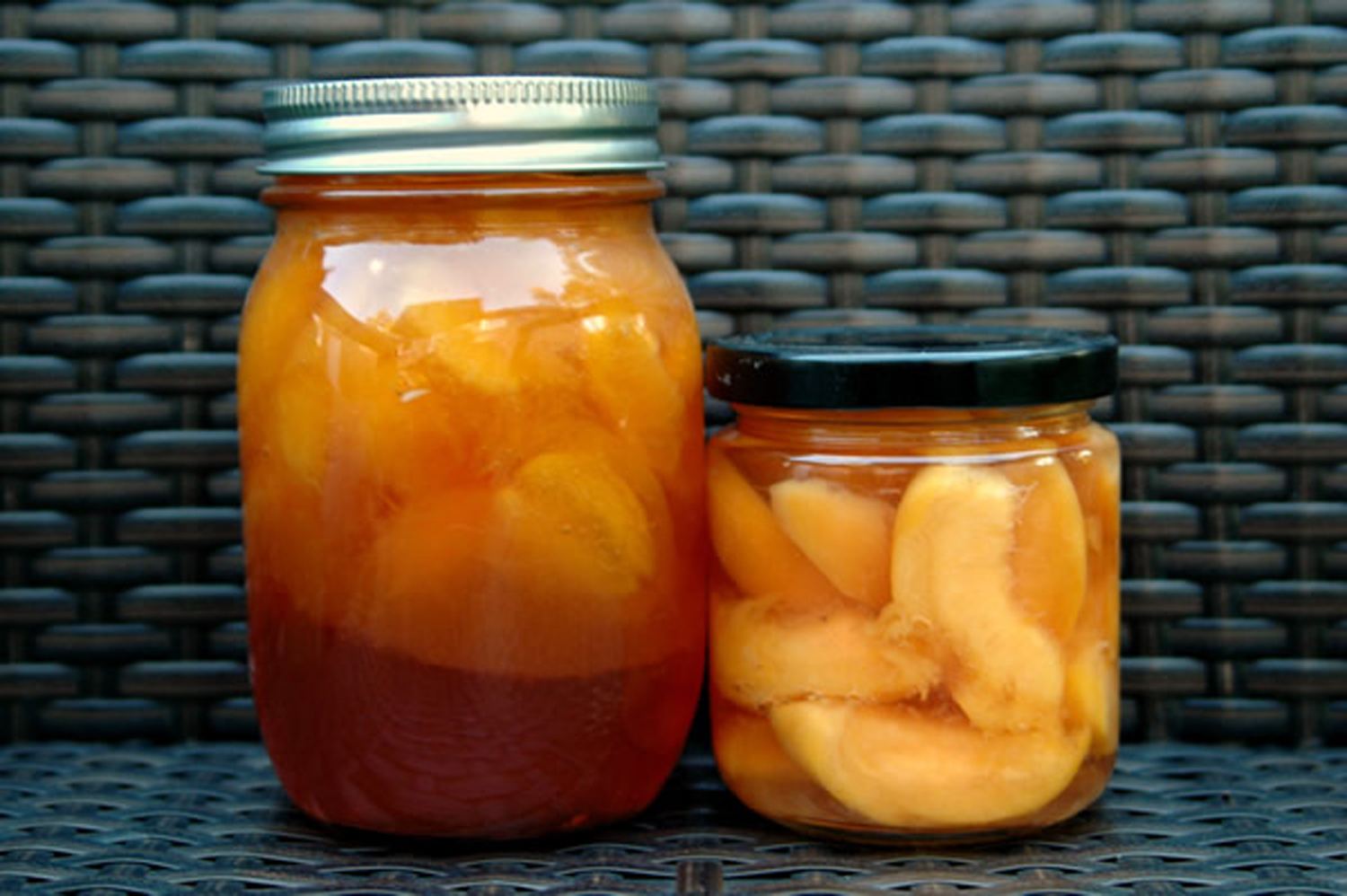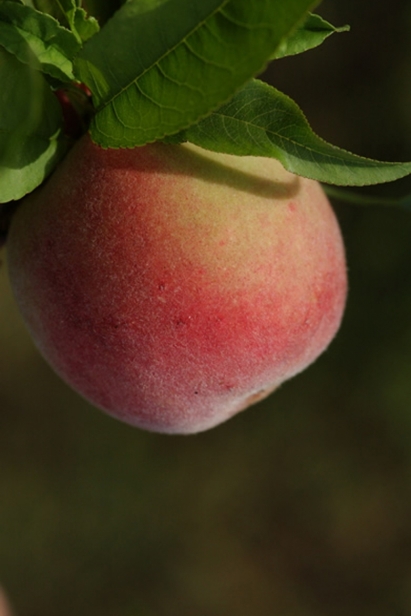How-To: Preserving Peaches
Always keep in mind that what you put into the jar affects what you get out it
I grew up in Alberta and spent my summers in British Columbia's Okanagan Valley, surrounded by vineyards, fruit orchards, and water. My mom and I would spend the early mornings picking fresh raspberries and cherries and, over the following days, gorging on them.
When I moved to Toronto to go to university, I knew there would be things about home I would miss—obvious ones like my mom, my sisters, my friends, and my dog. But I was amazed when I began to feel that other, less tangible things, were also absent from my life. I missed the stunning view of the mountains on the drive to my nona's house, the vineyards that surrounded our lake lot in Kelowna, and the seemingly endless summer bounty from the glorious fruit trees.
It's no surprise, then, that fruit picking is something I still look forward to every summer. It takes me back to those summers spent with my mom and my nona—when I was learning to preserve without even realizing it was happening.
Now I check out farm websites so that I know exactly when my favourite fruits are coming into season and I push other, sometimes more important tasks aside for those few hours out in the field where it can be just me, my bucket, the fruit, and the sound of the buzzing bees.
It's almost impossible for me to pick a favourite fruit, but if I flash back to those summers in the Valley the winner is, hands down, peaches. My mom, my nona, and my aunt would buy bushels of them in Kelowna and then bring them back to my nona's house in Sparwood. Nona would fire up the stove and the preserving would kick into high gear. Peach jam and preserved peaches were put down in jars—enough for all three ladies to have a sufficient supply in their pantries to last until the following summer. If we paced ourselves, that is, which was sometimes a challenge.
During my four years at university, my entire Ontario experience was really limited to a ten-block radius of Ryerson University. A trip north of Bloor Street felt like an adventure. So it wasn't until after I graduated that areas like Niagara and Prince Edward County came into my life. I'd had no idea that some of the items I was homesick for were there on the outskirts surrounding my new city. (I was shocked to recently discover that Ontario leads Canada in both peach and nectarine production, with about 80 percent of the market.)
With this amazing bounty practically on our doorsteps, it is always great to know how to extend the growing season by preserving some of what Ontario farmers are growing, enabling you to enjoy the harvest even when temperatures dip well below zero and the snow is falling.
There are many different ways to preserve peaches, three types of peaches to choose from—freestone, semi-freestone, and clingstone—and numerous varieties within each type.
All are delicious, but when it comes to preserving you will want to keep your eyes open for freestone peaches, the flesh of which easily separates from the pit, making it simpler to preserve whole or even in pieces. And if you quickly blanch your peaches in hot water and then plunge them into ice water, the skin of a nice ripe peach will just fall away in large pieces, making your work even more hassle-free.
I often get asked how to determine when a peach is ready to get made into jam or to be preserved in general. There are a couple of things to keep in mind as well as look out for, and some are more obvious than others.
For me, I always start with smell. Don't be afraid to pick up a fruit at a market or a store and give it the good old-fashioned sniff test. With most peaches, it should smell just like that first bite into the perfect peach tastes—sweet and delicious. If there is no obvious peach aroma, then there is a high probability that there will be no strong peachy taste.
Pay additional attention to the skin and weight of the peach. A nice, ripe peach should feel surprisingly heavy and dense for its size. (Mealy peaches tend to feel lighter in weight.) If the skin is wrinkled or puckered, put that peach right back down because it means it is dehydrated. If the peach is hard, that means it is unripe, but the great thing about peaches is that they will continue to ripen nicely off the tree. Just be sure to lay them out separately and not pile them up in a bowl where their weight could cause those on the bottom to bruise.
I always say that what goes into the jar comes out of the jar, meaning that you want to put the best possible quality of fruit into your preserves. Pass over peaches that are overly bruised or flattened. And if you end up with a peach with a mealy consistency it means that it was most likely picked when it was very green and then refrigerated for transport.
If growing practices are important to you, look for farmers who are growing organically. Peaches fall into the tender fruit category and like most fruit crops are susceptible to disease and insects. Many Ontario farmers follow Integrated Pest Management (IPM) programs. They learn various different methods to manage pests and receive advice on how and when to apply pesticides. As a result of these measures, many Ontario tender fruit farmers have been able to reduce their total pesticide use in recent years by 50 percent.
The fewer pesticides on your peaches, the better, since peaches and other tender fruits are like sponges and will soak up anything that's applied to them. There are a couple of growers in Niagara who refrain from using any chemical-based pesticides at all. You will not find their peaches in supermarkets; source them at farmers' markets that specialize in organic produce.
But whether you're visiting your local farmers' market, going to a u-pick, or looking for produce at your local grocery store, don't be afraid to ask questions about growing practices, where the fruit is from, and what variety it is, so you can make the most informed decisions possible.






